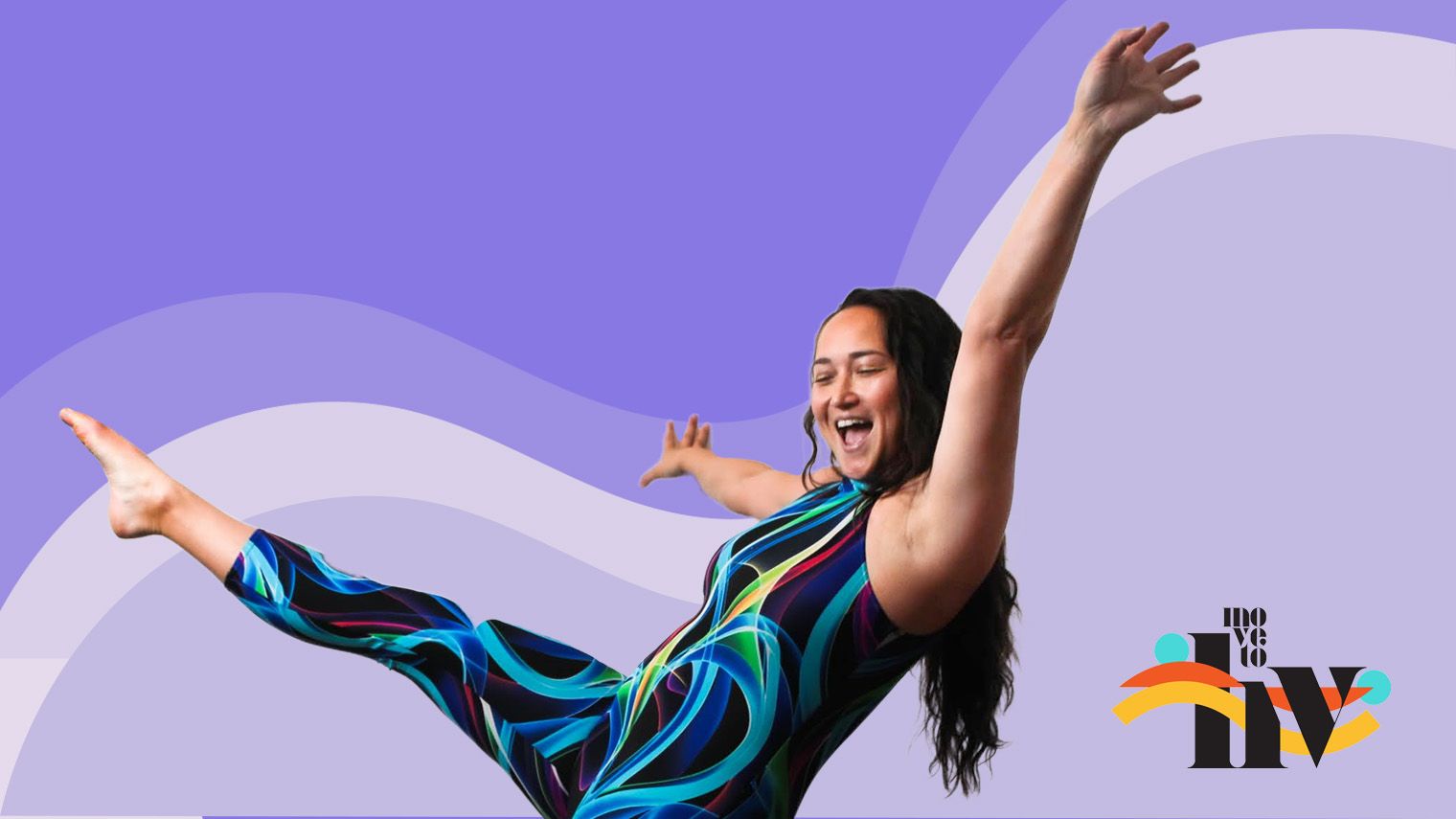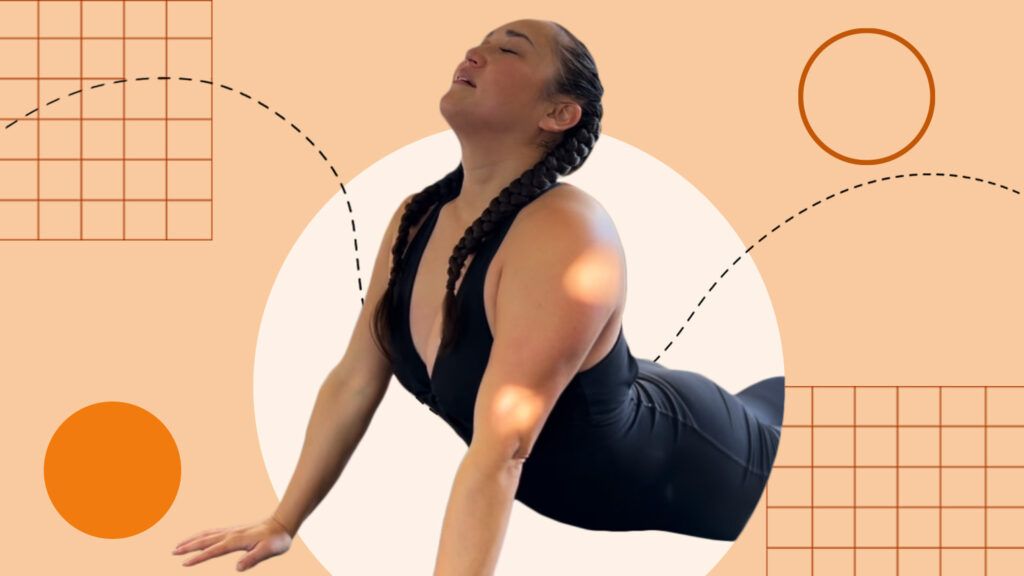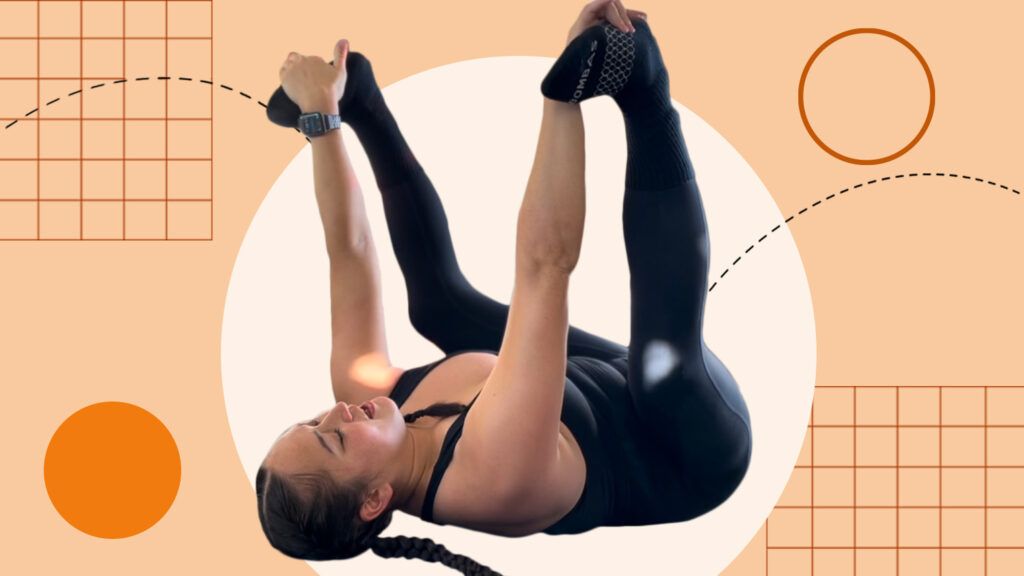How Movement Became My Medicine
September 12, 2023
Content created for the Bezzy community and sponsored by our partners. Learn More

Design: Alexis Lira – Photo: Liv Loo
I was only 4 years old when I was diagnosed with rheumatoid arthritis. Slowly but surely, I started to understand the consequences of missing playtime and not moving my body.
Even when I was very little, I knew that my body was different. My body hurt, and I was always in pain. But I also loved to play and move my body, and I soon learned why. I discovered that movement helped my symptoms.
This created a foundation that has stayed with me into adulthood. It inspired me to become a personal trainer so I could help others develop that foundation for themselves.
As someone living with rheumatoid arthritis (RA), I know what it’s like to have fatigue so embedded in your body that you just don’t want to move. But I also know that even a little movement can be powerful and change your life. It definitely changed mine.


Discovering movement
When I was 4 years old, I struggled to sleep. I constantly woke up with stomachaches. I’d curl up in pain on my mom’s bedroom floor while she was sleeping. Fortunately, she was my best advocate. She did her own research and wanted to find the right doctors to help. She fought for answers.
I was diagnosed with juvenile idiopathic arthritis that same year, at age 4.
Originally, the pain was in my knees. Soon, it also traveled through my body, affecting my ankles, hips, and wrists. But I still played like all the other kids. In fact, I really noticed when I didn’t.
Missing playtime had really big consequences. I don’t mean this in a sulky tantrum “I must play” kind of way. I mean this in a life-altering way. If I didn’t play, I found it so much harder to move the next day. I was learning how important movement was for my condition.
Moving with medicine
When I was 16, I went into remission for a year before my RA came back with even more intensity. At that point, I went on a biologic, which I’ve been on for 15 years.
I feel incredibly lucky to have been on the same medication for that long. I believe that the long-term effectiveness of the biologic has a lot to do with movement being such a consistent part of my life. I’ll never know this for certain, but I’ve also learned to trust my intuition. What I feel matters. I know that moving makes me feel better, and I think this gives my biologic a helping hand.
This has often gone against the advice of my rheumatologist. He doesn’t tell me to avoid movement, but he often tells me to reduce my exercise if I have new pain or inflammation. If my wrists hurt, I’m told to slow down and stop doing planks. There’s not much middle ground. It’s often a yes-or-no approach to movement — and most likely the latter, since I do have inflammation and pain.
I know that avoiding specific movements won’t help me. I have this experience, and I take movement forward in a way that feels good for me.
The 2022 guidelines for integrative RA treatment from the American College of Rheumatology state that exercise is more effective than any other lifestyle intervention for improving physical function and decreasing pain. No matter the type, consistently engaging in exercise is strongly recommended.
In general, physical activity can help with symptom management for a range of chronic conditions. It can also help prevent certain conditions.
I try to avoid thinking of movement as strictly exercise, though. It means so much more. It’s not just about how you’re moving your body. It also affects your mindset. When you need to motivate yourself to move and be consistent, it creates a greater feeling of control.
As anyone with a chronic condition knows, feeling in control isn’t easy. But being intentional and intuitive in your movement can go a long way toward building a sense of resilience and authority.
MovetoLiv
When I was 27, I became a NASM-certified personal trainer. The next year, I launched MovetoLiv, which focuses on helping people break the cycle of flare-ups and make movement accessible for any given day.
I approach movement sessions from the perspective of both mind and body. Stress and anxiety can have very real physical impacts. If movement is only about what you’re doing with your physical body, it’s only addressing half of what’s going on.
I work with my clients to create movement that’s specific to what they’re feeling and thinking while progressing toward long-term goals such as greater mobility and fewer flare-ups.
When I’m with a client, I go into a flow state. I have the ability to tap in and empathize, and sometimes when I close my eyes, I can visualize what’s happening with their body on an anatomical level. That’s when I think of movements that I know will bring pain relief. That comes from my training, but it also originates from having RA from such a young age and exploring options for my own healing.
Recently, I decided to take this knowledge and branch out. I’m in the process of becoming a life coach. Over the past 5 years of MovetoLiv, I’ve discovered that movement is a powerful part of the healing process, but it’s also only one part. Nutrition and mindset coaching also have to be addressed, as well as talking about emotional health and getting support. It all fits together, so my mission is to help others figure out how to thrive with movement and beyond.
3 tips for starting to move
1. Begin the day with some intentional morning movement (2 minutes will do)
For those who have never explored this approach to movement, I’d advise starting with some type of intentional morning movement. Our bodies can feel a bit stiff in the morning, so it’s important to jump-start the day with movement and get your joints ready for whatever’s next.
This doesn’t have to mean “fitness,” where you need a specific routine. I mean doing two or three movements that open up your body and feel nourishing for you. I try to avoid setting a length of time for this because if the movement feels good, I hope you’ll naturally want to do more and will listen to your body.
Two of my favorite morning movements are Cobra Pose and Happy Baby Pose. Why not give them a go?
Cobra Pose
- Start by lying flat on your belly, with the soles of your feet facing up.
- Rest on your forearms, with the palms of your hands flat on the floor and directly underneath your shoulders. Your elbows should be close to the sides of your body.
- Rock your hips left and right without activating any muscles. This will loosen your lower back and hips a bit, and it feels really nice.
- Now, move your palms 1–2 inches in front of your shoulders and exhale as you push away from the floor. Your forearms should lift from the floor to make your arms fully extend, and your spine should curve.
- Breathe and hold.
- Squeeze your glutes (your booty) to decompress your low back. Make sure you keep your shoulders low and away from your ears.
- Hold for 5–10 seconds, then exhale as you lower yourself back down.
- Repeat 3–5 times. If you’re new to back flexibility, stick to 3 and repeat tomorrow.
- You may progress this stretch by moving your hands farther back in the starting position.
Learn more about the health benefits of this pose.

Happy Baby Pose
- Start by lying on your back and bringing your knees toward your chest at a 90-degree angle.
- Grab the arches of both feet from the inside of the foot. If this is too difficult, you can grab your ankles.
- Relax your head on the floor and enjoy the stretch.
- To enhance the stretch, you can rock gently left and right to massage your back into the floor.
- Enjoy this literally any time of day!
Learn more about the health benefits of this pose.

2. Think about journaling, and learn to talk to yourself kindly
I’m a fan of keeping a journal. It helps you tap into that intuitive state and practice more acceptance of yourself and the choices you’re making. What makes you happy? What makes you feel grateful?
There’s so much you can learn when you start writing down the answers to these questions. You begin to see how you talk to yourself. For a while, I had a happiness coach and spent time listening to my self-talk and how that affected the way I felt physically and mentally.
It made me change how I show up for myself and how I treat my body when I move. Even if my body hurts and doesn’t move in the way I want it to, I remain thankful and treat myself and my body with kindness. I try to bring that understanding into my client sessions as well.
3. Define what movement means to you
Take a step back and define what movement means to you. For example, for me it means freedom, so I move in ways that help me feel free.
You don’t have to stick to what society defines as fitness. You don’t have to go to the gym. You just have to move.
That’s what I try to convey: If you only have 2 minutes and you feel tired, that’s OK. Just use those 2 minutes to move more and see what changes. It might be more healing than you think.
The takeaway
For as long as I can remember, my body has been something more than what I live in. It’s something that I’m meant to move with to be in this world.
Even if my chronic condition makes it hard sometimes, movement has always been the best remedy. It makes me feel at one with my body and life.
More like this
19 Natural Remedies to Try for Rheumatoid Arthritis
How Diet and Exercise Helped Me Manage My Rheumatoid Arthritis
Medically reviewed on September 12, 2023
3 Sources


Like the story? React, bookmark, or share below:
Have thoughts or suggestions about this article? Email us at article-feedback@bezzy.com.
About the author